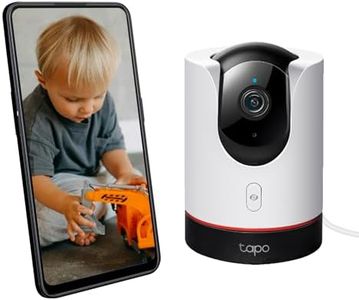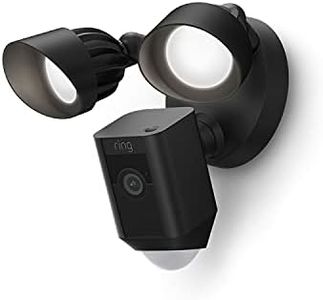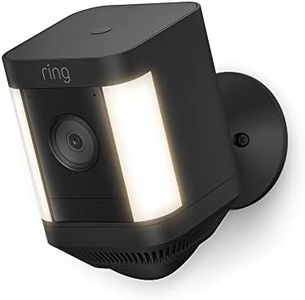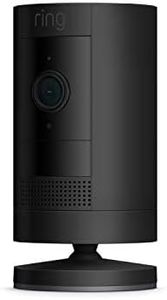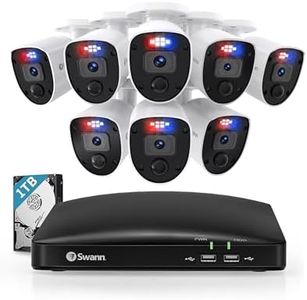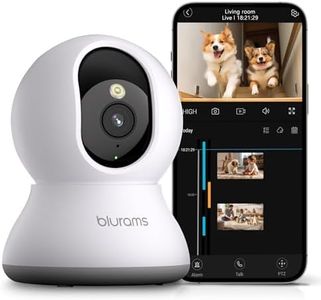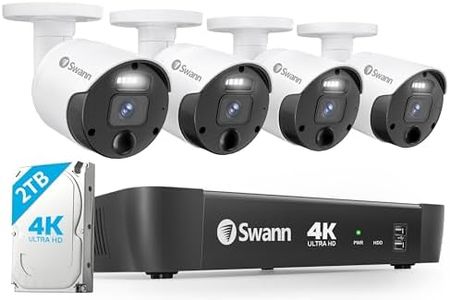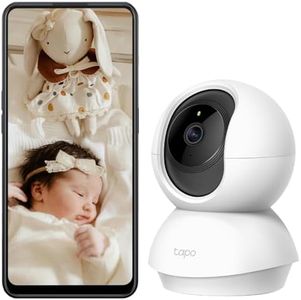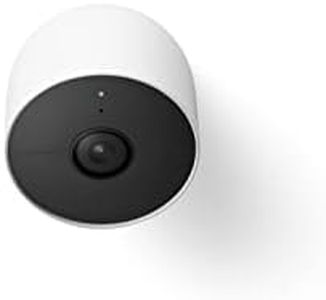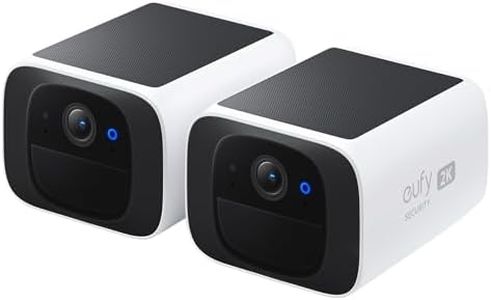We Use CookiesWe use cookies to enhance the security, performance,
functionality and for analytical and promotional activities. By continuing to browse this site you
are agreeing to our privacy policy
10 Best Indoor Surveillance Cameras
From leading brands and best sellers available on the web.By clicking on a link to a third party's website, log data is shared with that third party.
Buying Guide for the Best Indoor Surveillance Cameras
Selecting the right indoor surveillance camera can make a big difference in securing your home and keeping an eye on what matters most to you. Before making a choice, think about what you want to monitor, whether it's a large room, a specific entryway, or even your pets while you're away. Pay attention to the main features, as these will determine what you see, how clearly you see it, and how you access that footage. Understanding each key feature will help you pick a camera that fits your actual needs, lifestyle, and even your comfort level with technology.Video ResolutionVideo resolution refers to how clear and detailed the images and footage from your camera will look. This is measured in numbers like 720p (HD), 1080p (Full HD), or 4K (Ultra HD). Higher resolution gives you sharper images, making it easier to spot details like faces or small objects. Cameras with 720p are suitable for simple monitoring tasks where you just need to know what's happening, but may miss finer details. 1080p is now a standard and balances quality with file size, ideal for most households. 4K cameras offer even more detail but also require more storage space and stronger Wi-Fi. If you need to clearly identify faces or want to cover a large room, go for higher resolution, but if you just want basic awareness, lower resolutions suffice.
Field of ViewThe field of view tells you how wide an area your camera can see and is usually measured in degrees. A narrow field of view (around 90 degrees) focuses on a specific spot, while a wider angle (over 120 degrees) covers more of the room. A wider field of view means you can monitor more area with a single camera, which is great for open spaces, but the details at the edges might not be as sharp. For hallways or doorways, a narrower view will work fine, but for living rooms or larger spaces, a wide-angle lens might be a better choice.
Night VisionNight vision means the camera can record clear images even in low light or no light. This is normally achieved with infrared LEDs. The effectiveness of night vision is usually described by the distance it can cover in darkness, such as 10, 20, or 30 feet. For most home use, a night vision distance of 20 feet is sufficient, but if you're covering a large room or want extra clarity, look for longer ranges. If you need to monitor a dimly lit area or want protection day and night, make sure your camera offers good night vision.
Audio CapabilitiesAudio capability in a surveillance camera lets you listen to what's happening, and in some cases, speak through the camera using two-way audio. Simple cameras might only record video, while others offer one-way audio (listen only) or two-way audio (listen and speak). Two-way audio is helpful if you want to talk to family, instruct pets, or alert an intruder. If you simply want to record sound for context, one-way audio may suffice. Choose based on whether you need interaction or just listening.
Motion DetectionMotion detection is a feature where the camera starts recording, sends an alert, or both whenever movement is detected in its view. Basic motion detection senses any movement, while advanced systems can differentiate between people, pets, and other moving objects. Some even allow you to set specific zones to monitor for movement. If you want to be notified only when something important happens (like someone entering a room), look for cameras with customizable or smart motion detection.
Storage OptionsStorage refers to how and where your camera saves recorded footage for you to view later. Common options include local storage using microSD cards, cloud storage through a subscription service, or both. Local storage can be more private and avoids ongoing fees, but footage can be lost if the camera is stolen. Cloud storage keeps video safe offsite, allowing access from anywhere, but may involve monthly charges. If you want easy remote access or backup, consider cloud options, but if you prefer privacy or don't need long-term footage, local storage might be enough.
ConnectivityConnectivity means how the camera connects to the internet or your devices. Most indoor cameras use Wi-Fi, but some offer Ethernet for more reliable connections. The strength and reliability of your home network will influence your experience; a weak signal might lead to interruptions. If your camera will be far from your router, ensure it supports dual-band Wi-Fi or consider Ethernet if possible. For areas with spotty Wi-Fi, look for cameras with strong wireless capabilities or consider Wi-Fi extenders.
App and Smart Home IntegrationThis refers to how you view your camera feed or get alerts. Most modern cameras have mobile apps for live viewing, reviewing footage, and receiving notifications. Some cameras also integrate with smart home systems like Alexa or Google Assistant, letting you control them with voice commands or automate their behavior. If you want convenience, choose a camera with a user-friendly app or one that works with your existing smart home devices. If you prefer no app or have privacy concerns, look for simpler models with local viewing options.
Power SourceIndoor surveillance cameras can be powered by plugging them into an outlet, using rechargeable batteries, or even by Power over Ethernet. Plug-in models provide constant power but need to be close to an outlet, while battery-powered ones offer more flexibility in placement but require regular charging. Consider how often you're willing to charge a camera, how easy it is to install, and where you plan to set it up. Choose the power option that matches your home's layout and your willingness to deal with charging or wiring.
